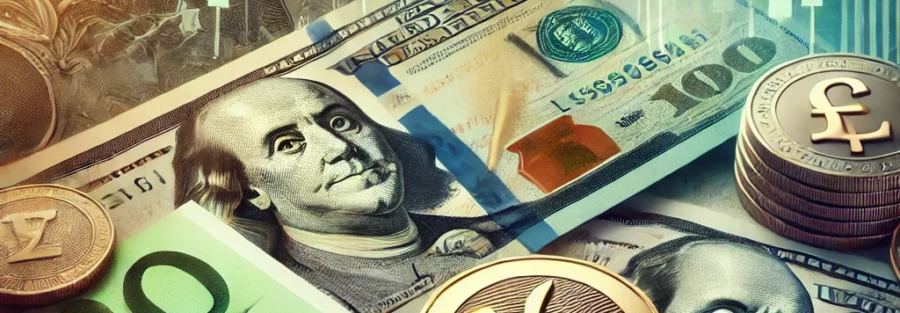U.S. Dollar Steadies Ahead of Inflation Data Amid Tariff Concerns
The U.S. dollar held firm against major currencies on Wednesday as investors assessed President-elect Donald Trump’s tariff proposals while awaiting a key U.S. inflation report due later in the day.
Trump’s recent pledge to impose significant tariffs on Canada, Mexico, and China—the U.S.’s three largest trading partners—has unsettled markets. However, some of the initial volatility eased during later U.S. trading hours.
“Markets are likely to remain cautious as uncertainty around policy direction under a second Trump administration resurfaces,” said Carol Kong, a currency strategist at Commonwealth Bank of Australia. “This uncertainty could prompt a ‘sell first, ask questions later’ approach, which tends to favor the U.S. dollar.”
The greenback rose 0.15% against the Canadian dollar, trading at C$1.40755, following a 4.5-year high of C$1.4178 on Tuesday. It also edged 0.3% higher against the Mexican peso, though it remained below its peak since July 2022.
“Investors should avoid overreacting, as tariffs are often used as leverage in trade negotiations,” noted Wei Liang Chang, currency and credit strategist at DBS in Singapore.
The dollar remained stable ahead of the October Personal Consumption Expenditures (PCE) price index report, expected later on Wednesday. U.S. markets will be closed Thursday for the Thanksgiving holiday. The dollar remained stable ahead of the October Personal Consumption Expenditures (PCE) price index report, expected later on Wednesday. U.S. markets will be closed Thursday for the Thanksgiving holiday.
Dollar Index Eases as Yen Gains on Safe-Haven Demand and Rate Hike Bets
The dollar index, which tracks the greenback against six major peers, edged down 0.07% to 106.83 on Wednesday.
The Japanese yen outperformed, buoyed by safe-haven demand, increasing speculation of a December rate hike in Japan, and end-of-year position adjustments.
“Heading into Thanksgiving, traders are unwinding ‘Trump trades,’ including bets on a stronger dollar,” said Shinichiro Kadota, senior currency and rates strategist at Barclays in Tokyo. However, Kadota expects the dollar to regain strength against the yen next year, citing Trump’s policies as “overall supportive” for the U.S. currency.
The dollar fell 0.47% to 152.37 yen, its lowest level in nearly three weeks.
China’s offshore yuan slipped 0.11% to 7.2661 as weak industrial profits and tariff concerns weighed on sentiment, while the onshore yuan dipped 0.08%, nearing its lowest level against the dollar since July 30.
Ceasefire Boosts Israeli Shekel
A ceasefire agreement between Israel and the Iran-backed Hezbollah came into effect early Wednesday after being brokered by the United States and France, President Joe Biden announced. The Israeli shekel reached a three-month high on Tuesday.
Mixed Performance Among Major Currencies
The euro eased 0.10% to $1.0479, while the British pound held steady at $1.2570.
The Australian dollar inched up 0.03% to $0.6476 following data showing domestic consumer inflation remained at a three-year low in October. The New Zealand dollar rose 0.5% to $0.58635.
Bitcoin Struggles Below $100K
In cryptocurrencies, bitcoin gained just over 1% to trade at $92,692, still below last week’s record high of $99,830. The cryptocurrency has faced resistance at the symbolic $100,000 level as profit-taking continues.





